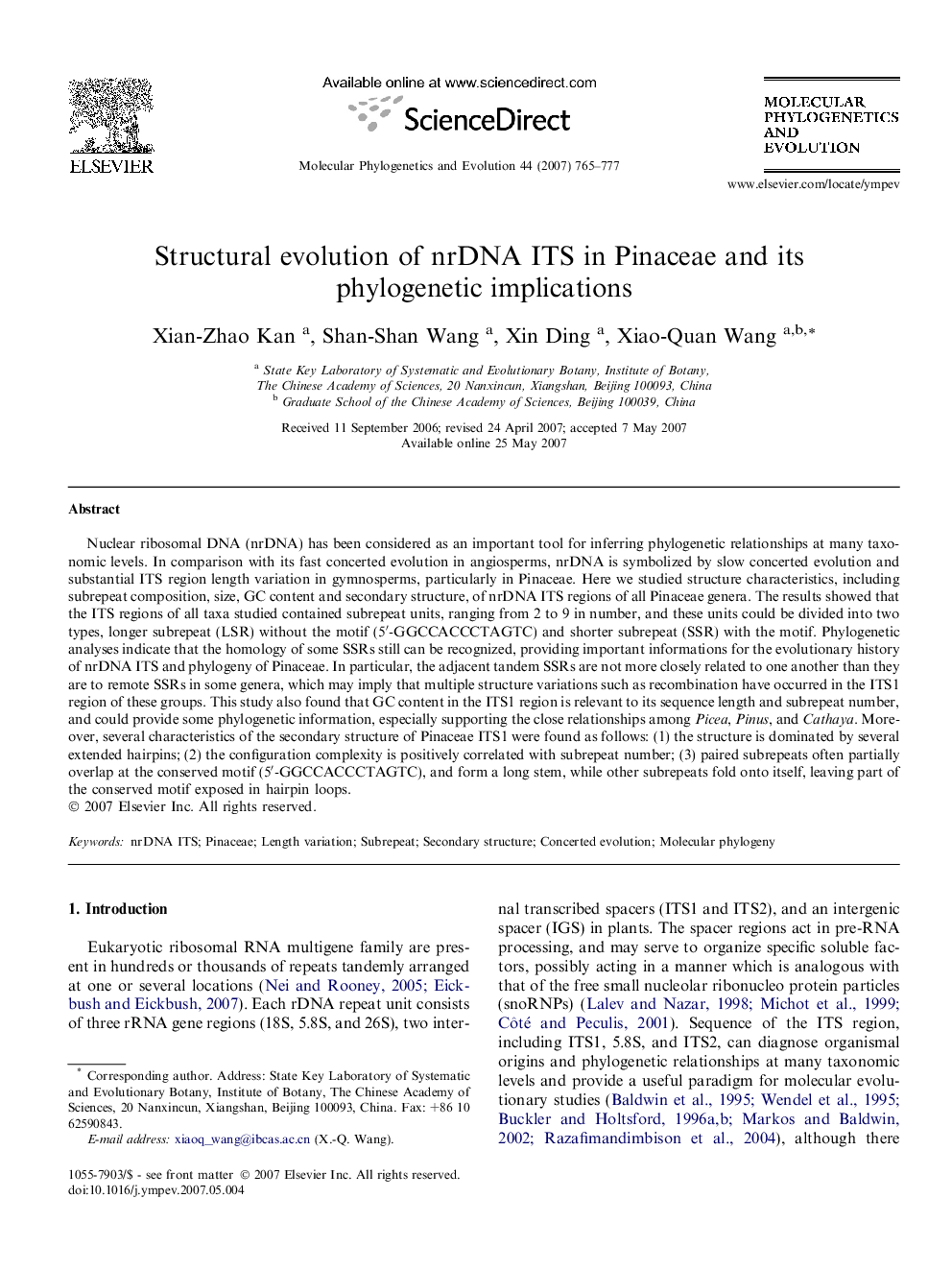| Article ID | Journal | Published Year | Pages | File Type |
|---|---|---|---|---|
| 2835559 | Molecular Phylogenetics and Evolution | 2007 | 13 Pages |
Nuclear ribosomal DNA (nrDNA) has been considered as an important tool for inferring phylogenetic relationships at many taxonomic levels. In comparison with its fast concerted evolution in angiosperms, nrDNA is symbolized by slow concerted evolution and substantial ITS region length variation in gymnosperms, particularly in Pinaceae. Here we studied structure characteristics, including subrepeat composition, size, GC content and secondary structure, of nrDNA ITS regions of all Pinaceae genera. The results showed that the ITS regions of all taxa studied contained subrepeat units, ranging from 2 to 9 in number, and these units could be divided into two types, longer subrepeat (LSR) without the motif (5′-GGCCACCCTAGTC) and shorter subrepeat (SSR) with the motif. Phylogenetic analyses indicate that the homology of some SSRs still can be recognized, providing important informations for the evolutionary history of nrDNA ITS and phylogeny of Pinaceae. In particular, the adjacent tandem SSRs are not more closely related to one another than they are to remote SSRs in some genera, which may imply that multiple structure variations such as recombination have occurred in the ITS1 region of these groups. This study also found that GC content in the ITS1 region is relevant to its sequence length and subrepeat number, and could provide some phylogenetic information, especially supporting the close relationships among Picea, Pinus, and Cathaya. Moreover, several characteristics of the secondary structure of Pinaceae ITS1 were found as follows: (1) the structure is dominated by several extended hairpins; (2) the configuration complexity is positively correlated with subrepeat number; (3) paired subrepeats often partially overlap at the conserved motif (5′-GGCCACCCTAGTC), and form a long stem, while other subrepeats fold onto itself, leaving part of the conserved motif exposed in hairpin loops.
